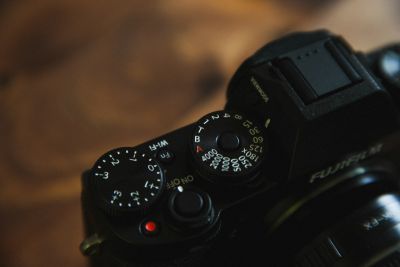Sports Mode in Photography: Capturing the Action with Precision
Photography has the power to freeze fast-paced action and immortalize dynamic moments in time. To achieve this, modern cameras come equipped with various shooting modes tailored to specific scenarios, and one such mode is “Sports Mode.” In this article, we will explore what sports mode is, what it does, and when to use it to capture stunning sports and action photographs.
What Exactly is Sports Mode?
Sports mode, also known as Action mode or Sports Action mode, is a pre-set shooting mode found in many digital cameras, ranging from point-and-shoots to advanced DSLRs and mirrorless cameras. When activated, the camera adjusts a combination of settings to optimize its performance for capturing moving subjects. This mode allows photographers to focus on fast-paced action without getting bogged down by manual adjustments.
While manual mode will create more consistent, controlled, and precise results, sports mode is a great feature for beginner and amateur photographers.
What Does Sports Mode Do?
When you switch to sports mode, the camera makes several adjustments to ensure optimal settings for capturing action shots. Here are some common changes that occur when you use sports mode:
1. Shutter Speed: One of the essential factors in sports photography is a fast shutter speed. Sports mode automatically sets a high shutter speed to freeze the motion of athletes or moving subjects. This prevents motion blur, ensuring sharp images even during fast movements.
2. Continuous Shooting (Burst Mode): In sports mode, the camera often enables continuous shooting or burst mode. This means that when you press and hold the shutter button, the camera takes a rapid series of shots in quick succession, allowing you to capture a sequence of actions.
3. Autofocus Tracking: Sports mode activates advanced autofocus tracking, ensuring the camera can lock onto and follow the subject as it moves across the frame. This technology helps keep the subject in focus throughout the series of shots.
4. ISO Sensitivity: In low-light conditions, sports mode may increase the ISO sensitivity to maintain the fast shutter speed needed to capture action without compromising image quality.
5. Aperture: While sports mode prioritizes a fast shutter speed, it also adjusts the aperture to ensure a well-balanced exposure, though this may vary depending on the camera model.
When to Use Sports Mode in Photography
A photographer should use sports mode when they want to capture fast-moving subjects and freeze the action. Sports mode is particularly useful in situations where the lighting conditions are challenging or changing rapidly, such as during an outdoor sports event or wildlife photography. It can also be helpful for photographers who are not familiar with manual camera settings or who need to quickly adjust to capture the action. However, it’s important to note that while sports mode can be useful, it may not always produce the best results in all situations. Photographers who have a good understanding of manual camera settings may be able to achieve even better results by adjusting their camera settings themselves.
Here are some scenarios where using sports mode is particularly advantageous:
1. Sports Events: Whether it’s football, soccer, basketball, or any other sport, sports mode is perfect for capturing athletes in action. It helps you freeze the motion and get sharp images during the excitement of the game.
2. Action Photography: Apart from sports, sports mode is ideal for photographing other fast-paced activities like racing events, dance performances, wildlife in motion, or even children playing.
3. Unpredictable Subjects: When you have subjects that move unpredictably or erratically, like pets or playful kids, sports mode can assist in getting clear shots without missing the moment.
4. Low-Light Action: In dimly lit environments, sports mode’s ability to boost ISO sensitivity can be beneficial to maintain high shutter speeds, allowing you to capture action even in challenging lighting conditions.
5. Limited Time for Settings: In situations where you need to react quickly to capture a moment, sports mode eliminates the need to adjust multiple settings manually, enabling you to focus solely on the composition and timing.
Related Articles to Sports mode Definition

Aperture Priority vs. Shutter Priority vs. Manual Mode | Which is Best?

3 Custom Camera Settings for Wildlife & Sports Photography

Why Auto-ISO + Manual Mode Is the Best Auto Exposure Mode

Understanding Your Camera’s Drive Modes









